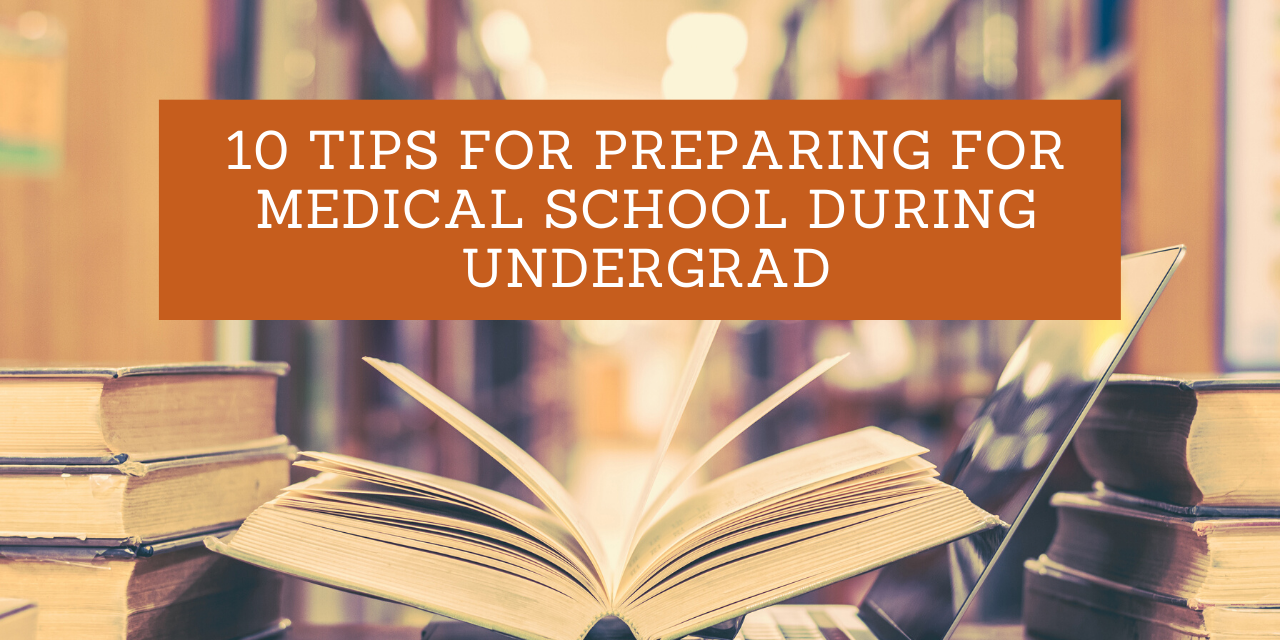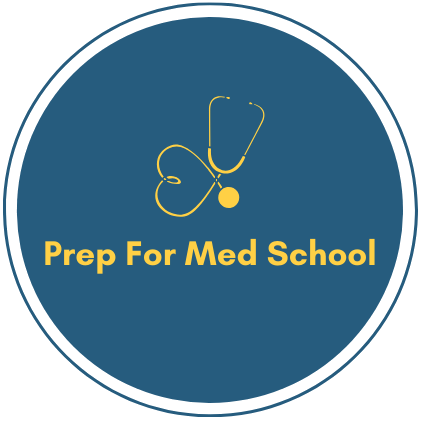10 Tips For Preparing For Medical School During Undergrad

If medicine is something you’re contemplating in your future, there are so many things to think about to ensure your resume and grades are pristine when medical school applications come along. Getting into medicine is extremely competitive so if it is something you are serious about, then getting ready for it during college is of utmost importance. Here are 10 tips that you can implement during your undergraduate education that will enable you to increase your odds of getting into a good medical school.
Table of Contents
1. Prioritize Your Science Courses Over Others
Science, specifically BCPM classes. BCPM stands for Biology, Chemistry, Physics, and Math. Your GPA when applying to medical school will be calculated in two manners – one that amalgamates your BCPM grades, and your total cumulative GPA. Admissions will evaluate your ability to handle medical school by your performance on BCPM, so be sure to put extra effort into these courses.
According to The Princeton Review, the BCPM GPA of the 2017-2018 incoming class was 3.64.
Note that some courses may be considered a science and won’t fall into these BCPM categories. They will not be counted towards your BCPM GPA. The AAMC has published a guide clarifying what classes count as BCPM.
2. Prepare Well For The MCAT
Your GPA and the MCAT are neck and neck for the most important things on your medical school application. Extra-curricular activities won’t get you into medical school, it can potentially save you from poor scores or supplement your application. The MCAT is a whopping 7.5 hours, and are made of the following four sections:
| Biology and biochemical foundations | Biology, Organic Chemistry, Inorganic Chemistry, Biochemistry |
| Chemical and physical foundations | Greater focus on Chemistry and Physics may have Biochemical concepts on here as well |
| Social Foundations | Psychology and Sociology focused |
| Critical Analysis and Reasoning | Reading comprehension passages |
I didn’t focus on studying for the MCAT during undergrad as I took a couple of years off before applying. By the time I took the MCAT, I barely remembered anything from my undergrad classes. That being said, the review books are more than sufficient for a great score.
Doing a lot of questions (from the question banks) helped me get a competitive score on the MCAT. For each section, I did about 1,200 questions each. I used review books from Examkrackers and Princeton Review.
3. Figure Out How To Pay For Medical School
Medical school is expensive! Look into this your junior or senior year. The average cost of attendance for one year is about 40-60k a year. Don’t forget to factor in your cost of living and educational materials as well.
Some ways to ease the cost:
Get a Loan
Medical school requires the same FAFSA (Free Application for Federal Student Aid) you filled out for college. One of the federal loans requires a good credit score, so be sure to build your credit score early to qualify.
HPSP and Military scholarships
The HPSP (Health Professions Scholarship Program) provides scholarships given by the US Army, the Navy, and the Air Force. It’s a one-for-one agreement, meaning for every year they provide financial help, the request a year of active duty. You can read more here.
Another scholarship is the MDSSP (Medical and Dental Student Stipend Program), which has less of a duty commitment, and therefore comes with a smaller financial incentive.
Apply to an MSTP Program
Funded by the National Institute of Health (the head of US biomedical research), it is known as the MSTP, or the Medical Scientist Training Program. The MSTP program lasts 8 years, and you
will earn an MD and PhD at its conclusion. There are a number of academic institutions that offer it, but admissions are incredibly competitive. If you get accepted to an MSTP program, you will have your tuition paid for and will also receive a stipend.
Note: While the majority of MD/PhD programs are MSTP programs, there are a few out there that are not. For instance, Georgetown’s MD/PhD program is not an MSTP program, but it does cover 50% of medical school tuition and fees.
Financial Aid for medical school applications
It’s no surprise that taking the MCAT and applying for medical school costs money. For those that are eligible, there is a fee assistance program through the Association of American Medical Colleges to help you with the cost.
4. Figure Out Your Balancing Act
As a pre-medical student, you’re torn between balancing your academics, your extra-curriculars, and your free time. It’s hard to determine how much time you should be investing in each. One of the biggest mistakes I made was spreading myself too thin.
Pick a couple of medically-related activities that you’re passionate about, and stick with them. Medical school admissions will ask you about these accomplishments during the interview. It’s crucial to be knowledgeable about the achievement to reflect the time you committed to it.
5. Join a Clinic or Shadow
The path to medicine is a huge investment in time, money, and freedom. Get as much exposure to the field as possible to make sure that it is something that fits with the lifestyle you envisioned.
As a pre-medical student, I joined a teaching clinic that the medical school at my undergrad was operating. I spent two Saturdays every month at the clinic throughout college. Not only did I get a taste of what medicine was like, but I also developed a rapport with attending physicians that volunteered there. My consistent presence at the clinic resulted in a number of recommendation letters from these attendings.
6. Dabble in Other Majors
I started as a Biology major, thinking that it most aligned with my aspirations for medicine. But with the multitude of courses offered in college, my mind wandered. I became curious about Anthropology during my freshman year, but I couldn’t stand the lack of quantifiable conclusions. I then tried my hand at computer science, but my mind just didn’t work that way.
I returned to Biology, wasting many course units due to my indecision. I don’t regret any of it. It added richness to my curriculum that I wouldn’t have received by solely focusing on the pre-medical curriculum, and further solidified my desire to become a Biology major.
7. Try Your Hand at Research
Participating in research adds depth of understanding to the pre-medical curriculum. Since I spent so much time doing research during undergrad, I found that wrapping my head around biological concepts became so much easier.
It is imperative to find a good research mentor, which will usually be a graduate student or a post-doctoral candidate. He or she will help you through scientific reasoning, and be your advocate on including your name on the publication if you significantly contributed to the results.
Biomedical research and medicine run in similar veins. Working in research will test your desire to become a physician. Many pre-medical students became lost in the research realm and found their interests aligned more with getting the other doctoral degree, the Ph.D.
8. Meet With a Trained Pre-med counselor (And Meet With Them Early)
Heading into undergrad, my plan was to study hard for good grades and to do as many extra-curricular activities to beef up my resume. One of the biggest mistakes I made was not connecting with my pre-med counselor earlier.
Meeting with the pre-med counselor in your freshman year will give you a rough plan of what is required of prospective medical students. The medical admissions process is constantly changing. Your counselor will also know all the different paths (yes, there’s more than one!) that can lead to medical school.
There are two that come to mind and are particularly time-sensitive. One is the BA/BS/MD program, which allows students to go straight from undergrad to a medical degree. As this has to be done prior to college, I won’t spend too much time on it. These programs are extremely selective, but some have accelerated programs, reducing your typical 8-year timeline.
Another unique opportunity is the early assurance program. It’s exactly what it sounds like – you’ll send in your application in the middle of your undergrad career, and secure a spot in medical school earlier. Each program has different deadlines and requirements, so familiarize yourself with these in your freshman year to see if this is something you may be interested in.
9. Have Fun
Nothing beats the college years. It was my first time living away from my parents, and I had a freedom that I never experienced before. Don’t let medical school prerequisites tie you down. Take some classes in a foreign country for a quarter or a semester. Build those friendships with classmates and dorm-mates. Explore the city around your campus. The experience is as memorable as you make it.
10. Consider A Gap Year (or Years)
As a non-traditional student, I noticed a difference between those that took a couple of years off compared to those that came straight from undergrad. Trying your hand at a job after undergrad will give you a sense of life admin, and will help you understand the meaning of a dollar, something that will come in handy when you’re considering such a hefty investment like medical school.
Another thing I learned is the 9-5 job isn’t for me. Sitting at an office desk just couldn’t replicate the patient interaction I experienced volunteering at the clinic. Medicine is a big commitment, and I found that spending a couple of years in another profession made me realize I was meant to be a physician.
I know it’s a lot to take in! Take a deep breath and realize all these things above are spread out in four years. Comment below with what you’d like us to clarify or answer!

Leave a Reply